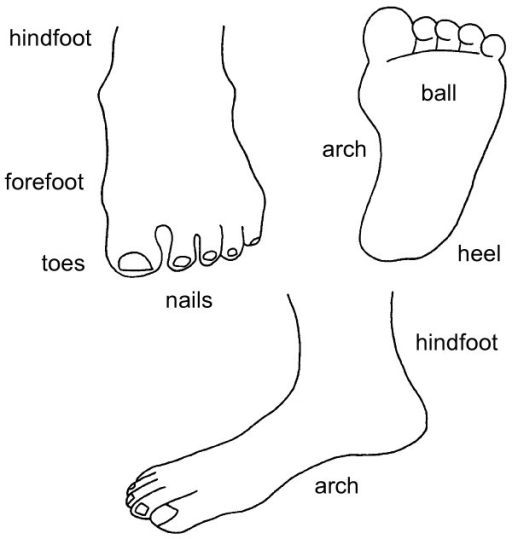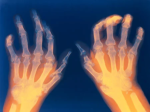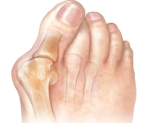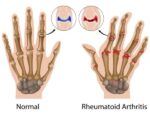What is Foot Pain ?
Foot pain is a common symptom that can be caused by various factors and conditions. It refers to discomfort or pain experienced in one or both feet and can range from mild to severe. Foot pain can originate from different sources, including the bones, muscles, tendons, ligaments, nerves, or skin of the feet.
A pain in foot often indicates that there is something wrong with the interaction of internal structures of the foot as the foot is the foundation of athletic movements of the lower human body. Pain is an unpleasant feeling that tells us there is something wrong in our body system and pain in foot can signify how the foot is interacting with its internal influences.

What Are the Causes of Foot Pain ?
Foot pain can have a wide range of causes, and it can result from various factors, including injuries, medical conditions, lifestyle choices, and more. Here are some common causes of foot pain:
- Injuries: Accidents and physical trauma, such as sprains, strains, fractures, and contusions, can cause foot pain. These injuries can result from sports, falls, or other mishaps.
- Overuse: Engaging in repetitive or high-impact activities, like running, hiking, or standing for long periods, can strain the feet and lead to pain.
- Footwear: Ill-fitting shoes, high heels, or shoes with inadequate arch support can cause discomfort and pain in the feet.
- Foot Deformities: Structural issues, such as flat feet or high arches, can cause pain due to improper weight distribution and gait abnormalities.
- Morton neuroma : A thickening of nerve tissue between the toes.
- Plantar Fasciitis: Inflammation of the plantar fascia, a thick band of tissue on the bottom of the foot, can lead to heel and arch pain.
- Achilles Tendonitis: Inflammation or overuse of the Achilles tendon can cause pain in the back of the heel and lower leg.
- Bunions: Bunions are bony bumps that form at the base of the big toe, resulting in pain and discomfort, particularly when wearing tight shoes.
- Hammer toes : Toes that curl downward into a claw-like position.
- Ingrown Toenails: When the edge of a toenail grows into the surrounding skin, it can cause pain, redness, and inflammation.
- Corns and Calluses: These are areas of thickened skin that can lead to localized pain, typically on the toes or soles of the feet.
- Neuropathy: Nerve damage, often related to conditions like diabetes, can result in burning, tingling, or shooting pain in the feet.
- Arthritis: Various forms of arthritis, including osteoarthritis and rheumatoid arthritis, can cause joint pain and inflammation in the feet.
- Nerve Damage From Diabetes.
- Gout: Gout is a type of arthritis caused by the accumulation of uric acid crystals in the joints, including those in the feet, leading to severe pain and inflammation.
- Tarsal Tunnel Syndrome: Compression of the tibial nerve in the tarsal tunnel can result in pain, tingling, and numbness in the foot.
- Morton’s Neuroma: Thickening of the tissue around the nerves leading to the toes can cause pain, often between the third and fourth toes.
- Infections: Fungal infections, bacterial infections, or cellulitis can lead to pain and discomfort in the feet.
- Poor Circulation: Conditions like peripheral artery disease can reduce blood flow to the feet, causing pain and cramping.
- Foot Skin Disorders: Conditions like psoriasis and eczema can lead to skin-related foot pain and discomfort.
- Plantar Warts: Sores on the soles of your feet due to pressure.
- Tendinitis: Inflammation of tendons in the foot, such as the peroneal or tibialis tendons, can result in pain.
The treatment for foot pain depends on the underlying cause, so it’s essential to consult a healthcare professional for an accurate diagnosis and appropriate management. They may recommend rest, physical therapy, orthotics, medication, lifestyle changes, or, in some cases, surgery to alleviate foot pain.
What Are the Symptoms of Foot Pain ?
The symptoms of foot pain can vary depending on the underlying cause, and they may range from mild discomfort to severe pain. Common symptoms associated with foot pain include:
- Localized Pain: Pain may be concentrated in a specific area of the foot, such as the heel, arch, ball, toes, or the top or bottom of the foot.
- Sharp or Dull Pain: Foot pain can manifest as a sharp, stabbing pain or a dull, aching discomfort.
- Burning Sensation: Some individuals with foot pain report a burning or tingling sensation in the affected area.
- Throbbing: In certain cases, foot pain may be accompanied by a throbbing sensation.
- Stiffness: The foot may feel stiff and difficult to move, particularly in the morning or after periods of rest.
- Swelling: Swelling in the foot or around the affected area is a common symptom of various foot conditions and injuries.
- Redness: Inflammation or irritation can lead to redness in the affected part of the foot.
- Bruising: Injuries or trauma to the foot can result in bruising, which may be accompanied by pain.
- Numbness and Tingling: Conditions that affect the nerves, such as neuropathy, can cause numbness, tingling, or a “pins and needles” sensation in the foot.
- Limited Range of Motion: Foot pain may restrict your ability to move or flex the foot properly.
- Pain with Weight-Bearing: Foot pain often intensifies when you stand, walk, or bear weight on the affected foot.
- Pain During Activity: Pain may be more pronounced during specific activities or exercises, depending on the cause of the discomfort.
- Pain at Rest: Some conditions, like gout or certain types of arthritis, can cause pain even when you’re at rest.
- Changes in Foot Appearance: Foot deformities, such as bunions, hammertoes, or changes in the alignment of the toes, can be both a symptom and a cause of foot pain.
- Discoloration: Infections or poor circulation can lead to discoloration of the skin or toenails on the foot.
How Many Kinds of Foot Pain Are There ?
Foot pain can manifest in various ways, and there are numerous types of foot pain based on the specific location and nature of the discomfort. Here are some common types of foot pain:
- Plantar Fasciitis: Pain at the bottom of the heel or along the arch of the foot, often most pronounced in the morning, is a characteristic symptom of plantar fasciitis. This condition results from inflammation of the plantar fascia, a thick band of tissue that supports the arch of the foot.
- Heel Pain: Heel pain can have multiple causes, including plantar fasciitis, Achilles tendonitis, or heel spurs. It is typically felt on the underside or back of the heel.
- Arch Pain: Pain in the arch of the foot can result from various issues, including flat feet (pes planus) or high arches (pes cavus), as well as conditions like plantar fasciitis.
- Metatarsalgia: This condition causes pain in the ball of the foot, often due to overuse, improper footwear, or stress on the metatarsal bones.
- Bunion Pain: Bunions are bony bumps that form at the base of the big toe, causing pain and discomfort, especially when wearing tight shoes.
- Toe Pain: Pain in the toes can be due to a variety of issues, such as ingrown toenails, corns, calluses, or conditions like gout.
- Nerve Pain: Conditions like neuropathy can lead to nerve pain, which often presents as a burning, tingling, or shooting pain in the feet.
- Achilles Tendon Pain: Pain in the back of the heel or along the Achilles tendon can result from inflammation or injury to the Achilles tendon.
- Ankle Pain: Although technically not the foot, pain in the ankle can radiate down to the foot. Common causes include sprains, strains, and fractures.
- Gouty Arthritis: Gout can cause sudden and severe pain, often affecting the big toe joint. It’s caused by the buildup of uric acid crystals in the joint.
- Corns and Calluses: These are areas of thickened skin that can cause localized pain, usually on the toes or soles of the feet.
- Tarsal Tunnel Syndrome: Similar to carpal tunnel syndrome in the wrist, this condition involves compression of the tibial nerve in the tarsal tunnel, causing pain and tingling in the foot.
- Morton’s Neuroma: This condition involves the thickening of the tissue around the nerves leading to the toes, leading to pain and discomfort, often felt between the third and fourth toes.
These are just a few examples of the many types of foot pain that individuals may experience. The specific type of foot pain and its underlying cause will determine the appropriate treatment and management.
How to Treat Foot Pain ?
The treatment for foot pain depends on the underlying cause and the severity of the pain. Here are some general approaches and strategies for treating foot pain:
- Rest: If your foot pain is due to overuse or strain, resting the affected foot can help it heal. Avoid activities that exacerbate the pain, and give your foot time to recover.
- Ice: Applying ice to the painful area can help reduce inflammation and alleviate pain. Use a cold pack or ice wrapped in a cloth for 15-20 minutes at a time, several times a day.
- Elevation: Elevating the foot can also reduce swelling. Try to keep your foot elevated above heart level when sitting or lying down.
- Pain Medication: Over-the-counter pain relievers like ibuprofen or acetaminophen can help manage pain and reduce inflammation. Follow the recommended dosage and consult a healthcare professional if you have concerns about medication interactions or side effects.
- Proper Footwear: Wear shoes that provide adequate support, cushioning, and comfort. Avoid high heels and shoes with inadequate arch support, which can contribute to foot pain.
- Orthotics: Custom or over-the-counter shoe inserts or orthotic devices can help correct foot alignment issues and provide additional support.
- Physical Therapy: A physical therapist can recommend exercises and stretches to strengthen the muscles and improve the flexibility of the foot, which can alleviate pain and prevent future issues.
- Foot Exercises: Regular exercises that focus on the muscles and tendons of the foot and ankle can help maintain foot health. These exercises can include toe curls, ankle circles, and calf stretches.
- Massage: Gentle massaging of the foot can help relax muscles and alleviate pain. You can do this yourself or see a professional masseuse or physical therapist.
- Hot Soaks: Soaking your feet in warm water can help relieve foot pain, particularly when it’s due to muscle tension or cramps. Add Epsom salts for added relaxation.
- Footwear Modifications: In some cases, a podiatrist or orthopedic specialist may recommend custom-made shoes or modifications to address specific foot conditions.
- Corticosteroid Injections: In cases of severe inflammation or pain, a healthcare professional may recommend corticosteroid injections to reduce inflammation and pain in specific areas of the foot.
- Surgery: When conservative treatments fail to provide relief, surgery may be necessary for conditions like bunions, severe hammertoes, or certain structural issues.
- Lifestyle Changes: Addressing contributing factors such as obesity or excessive physical activity can help alleviate foot pain over the long term.
- Treating Underlying Conditions: If the foot pain is due to an underlying medical condition, such as diabetes or arthritis, it’s important to manage and treat that condition to alleviate foot pain.
How to Protect Your Foot ?
Protecting your feet is important to maintain their health and prevent injuries or conditions that can lead to foot pain. Here are some tips on how to protect your feet:
- Choose Appropriate Footwear: Select shoes that fit well, provide proper arch support, and are suitable for the activity you’re engaging in. Avoid shoes that are too tight, too loose, or have high heels.
- Wear Protective Footwear: When engaging in activities that could result in injury, such as sports or construction work, wear appropriate protective footwear, like steel-toed boots or sports-specific shoes.
- Use Orthotics: If you have foot problems or structural issues, consider using custom or over-the-counter orthotic inserts to provide extra support and correct alignment.
- Trim Toenails Carefully: Cut your toenails straight across and avoid cutting them too short to prevent ingrown toenails.
- Maintain Good Foot Hygiene: Keep your feet clean and dry to prevent fungal and bacterial infections. Dry between your toes and moisturize your skin to prevent dryness and cracking.
- Inspect Your Feet: Regularly check your feet for cuts, sores, blisters, or any signs of infection. Early detection can help prevent complications.
- Protect Against Infections: Use flip-flops or shower shoes in public showers or locker rooms to reduce the risk of fungal infections like athlete’s foot.
- Warm Up and Stretch: Prior to physical activity or exercise, perform warm-up exercises and stretches to reduce the risk of muscle and tendon injuries.
- Gradual Increases: When starting a new exercise or activity, increase the intensity and duration gradually to avoid overuse injuries.
- Maintain a Healthy Weight: Excess body weight can put added stress on your feet. Maintaining a healthy weight can help reduce the risk of foot problems.
- Proper Walking and Running Technique: Pay attention to your gait and stride when walking or running. Avoid excessive pronation or supination (rolling in or out of the foot).
- Foot Protection in Extreme Weather: In cold weather, wear insulated and waterproof shoes or boots. In hot weather, avoid walking on hot surfaces and use sunscreen to protect your feet from sunburn.
- Use Moisture-Wicking Socks: Opt for moisture-wicking socks to keep your feet dry and reduce the risk of blisters.
- Stay Hydrated: Proper hydration can help prevent muscle cramps and foot fatigue during physical activities.
- Manage Underlying Conditions: If you have diabetes, poor circulation, or other medical conditions that affect your feet, work with your healthcare provider to manage these conditions and prevent complications.
- Custom Footwear: In some cases, custom-made shoes or orthopedic footwear may be necessary to accommodate specific foot conditions or deformities.
Pain Medications, Pain Relief, and Pain Management








